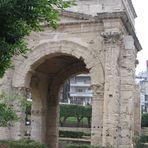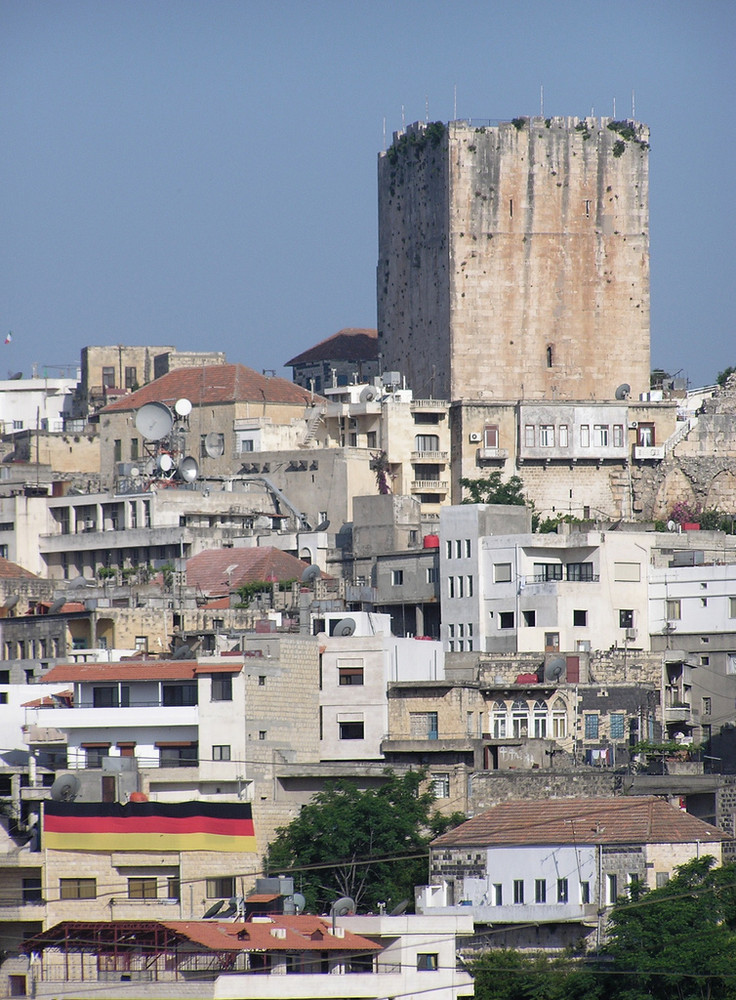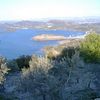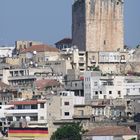Safita
Safita is a city in north-western Syria, located to the southeast of Tartous and to the northwest of Krak des Chevaliers. The city has a population of 33,000. It is located on the tops of 3 hills and the valleys in between them, in the coastal mountain ranges of Syria. It was important during the crusades, and was inhabited by the Knights Templar of the castle Chastel Blanc while part of the County of Tripoli.
History
The city has been inhabited since the times of the Phoenicians, and several archaeological discoveries have been made, including Phoenician and Canaanite settlements.
In 1102, Raymond IV of Toulouse began to take the land of the Banu Ammars Emirs of Tripoli. A four-year siege on Tripoli resulted in full control of the city and many lands surrounding it, including Safita. Mamluk Sultan Baibars captured the castle in 1271.
Chastel Blanc
Chastel Blanc (called by natives, 'Burj Safita' which means Safita Tower) was built by the Knights Templar during the Crusades upon prior fortifications. Constructed on the middle hill of Safita's three hills, it offers a commanding view of the surrounding countryside, and was a major part of the network of Crusader fortifications in the area. From the roof, one can see from the Mediterranean Sea to the snow-covered mountains of Lebanon, and Tripoli. From Chastel Blanc it would have been possible to see the Templar strongholds at Tartus and Ruad Island to the northwest, Chastel Rouge on the coastline to the southwest, Akkar to the south, and Krak des Chevaliers (the headquarters of the Syrian Knights Hospitallers) to the southeast. The tower is the remaining keep of the original castle. It has a height of 28 meters, a width of 18 meters, and a length of 31 meters. A large bell is on the western wall, and its sound can be heard up to 5 kilometers from Safita. The castle had to be restored in 1170 and 1202 following damages due to earthquakes. The keep in its current shape probably dates from the reconstruction after 1202.
St. Michael's Chapel on the ground floor of Chastel Blanc.Considering the time of its construction during the Crusades, the tower served two purposes, as both a chapel and a fortress, with 3 meter-thick walls constructed of massive and carefully-fitted limestone blocks. The ground floor still contains a chapel, dedicated to St. Michael and used by the Greek Orthodox community of Safita. The second floor, which can be reached by a flight of partially destroyed stairs, served as a dormitory, and contains many small angled windows that were used by archers to defend the tower. Cut into the rock below the tower is a water cistern, an essential element in case of siege.
From the other fortifications of the castle, only a portal at 45 meters to the East of the keep can still be seen today. During French colonialism, efforts were made to restore the tower, causing great discomfort to the villagers that lived very close to it.

Syria lattakia (The Great Sagittarius)
B--612










Commenti 0
Cancella commento
Eliminare commento e risposte